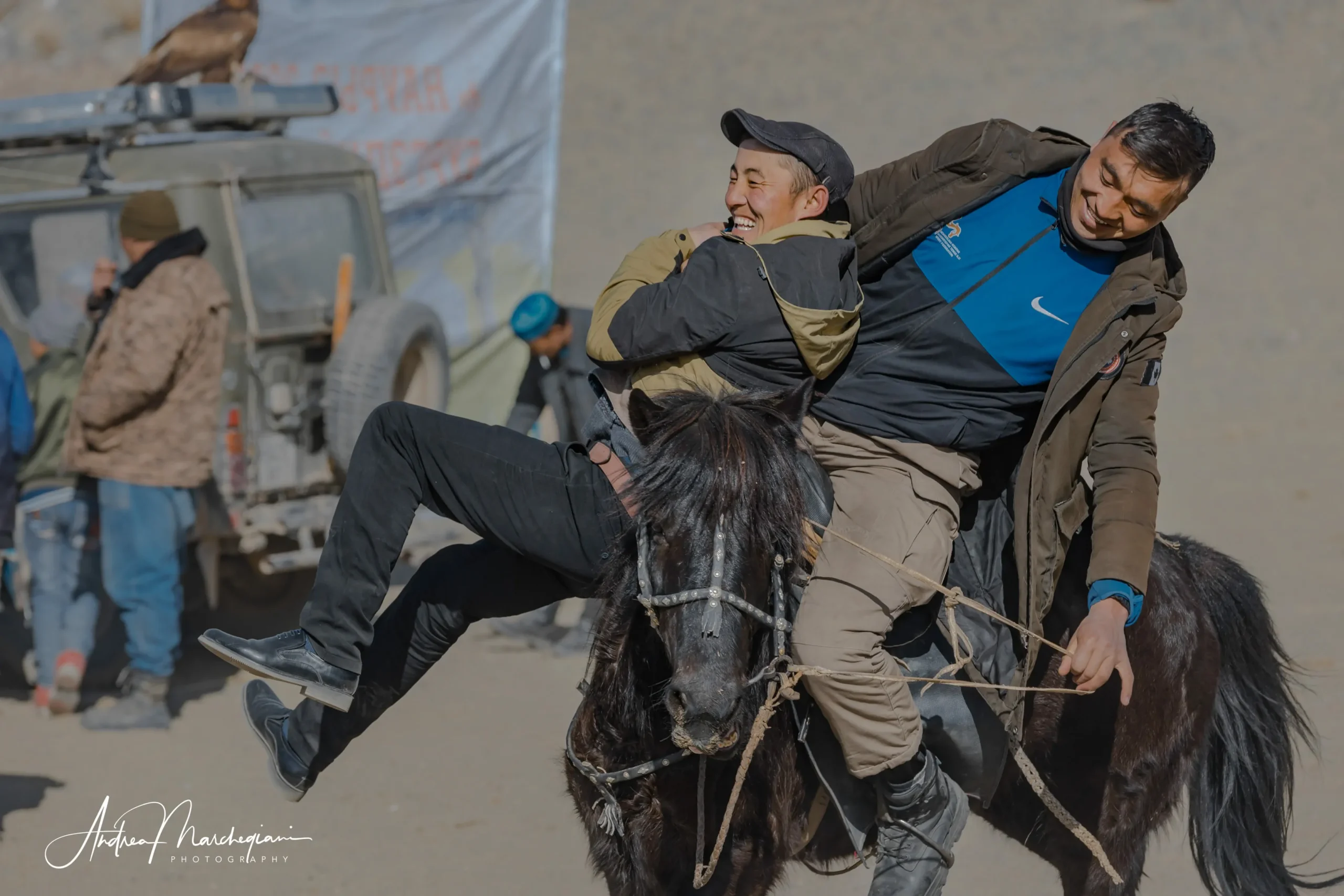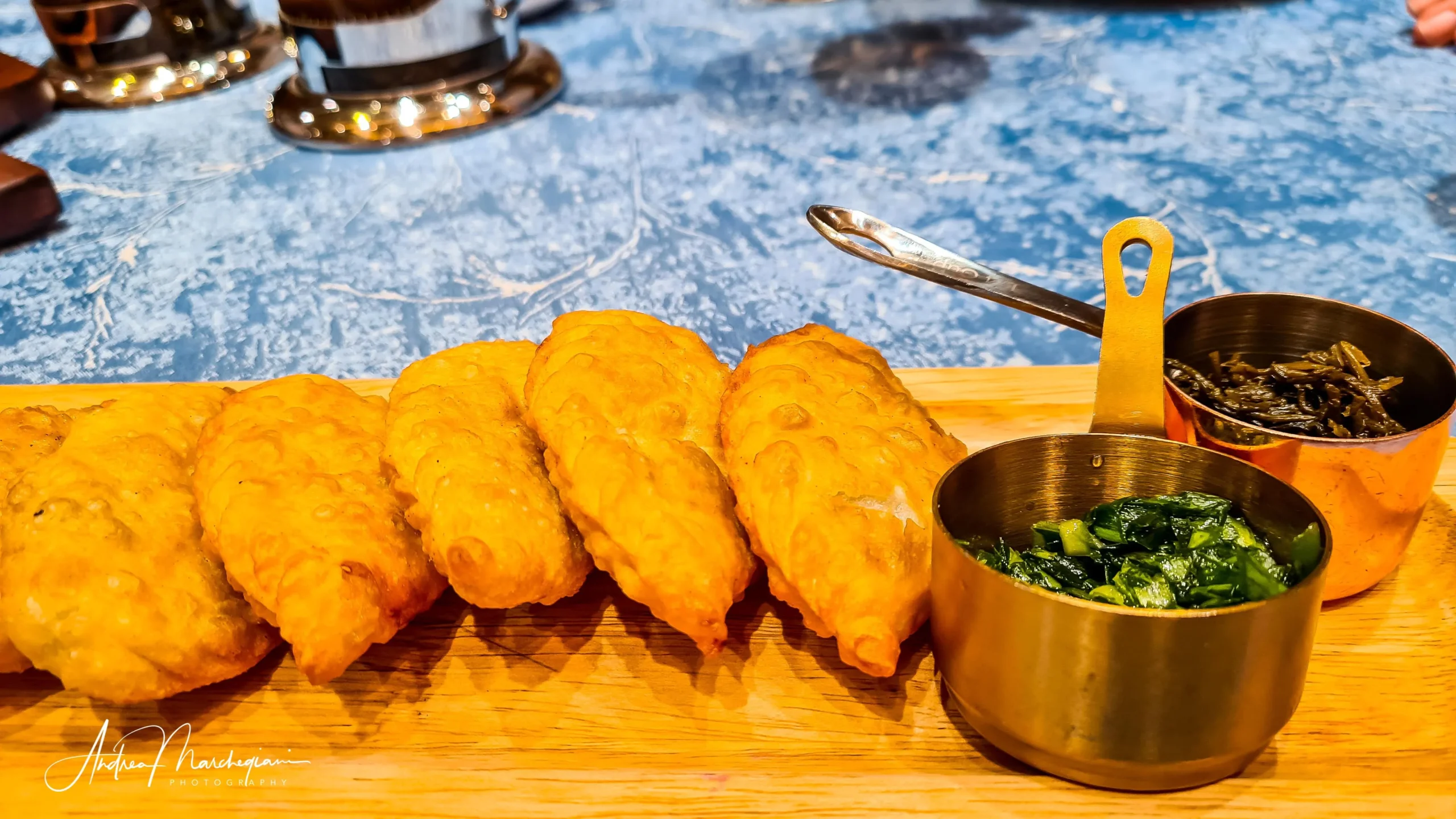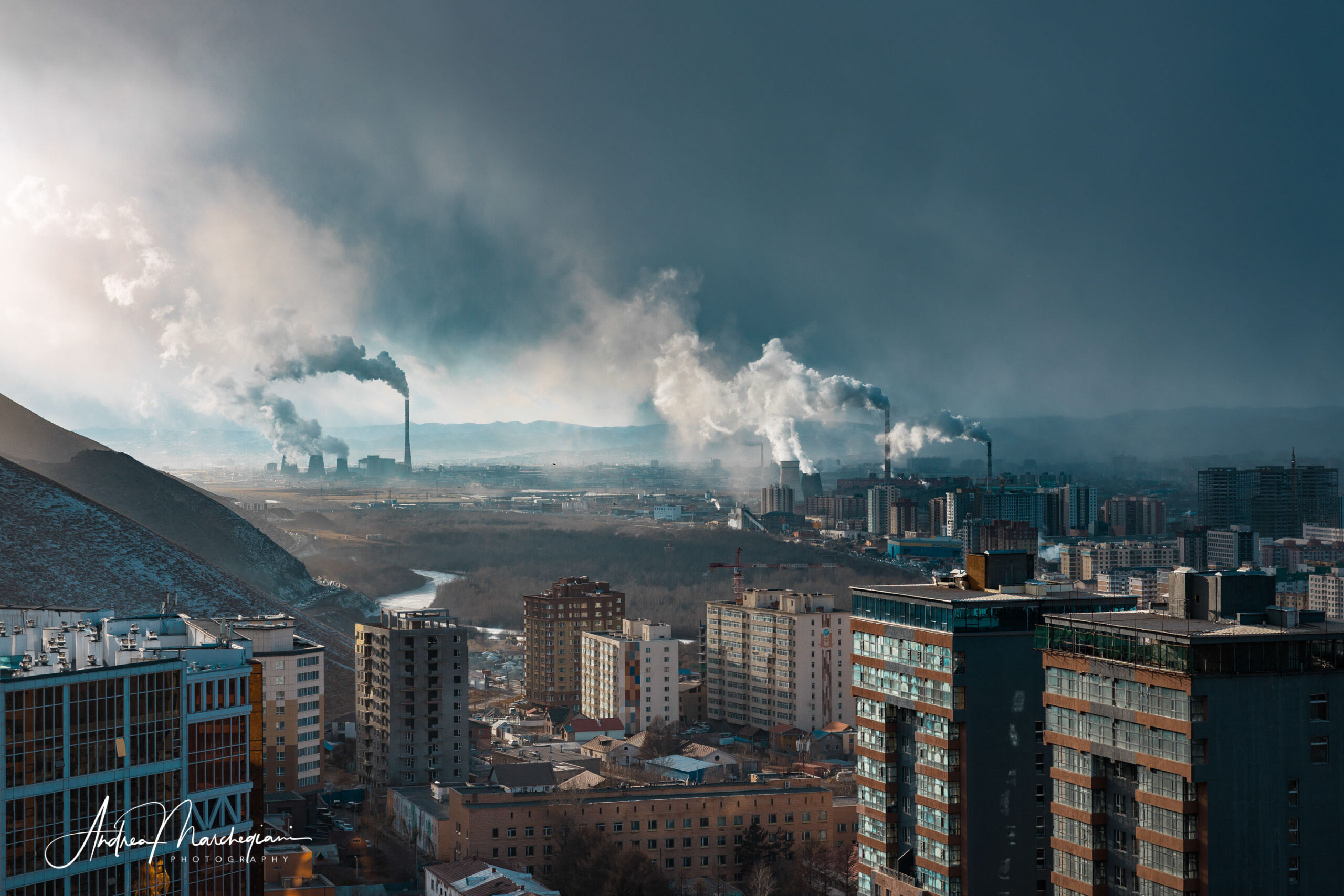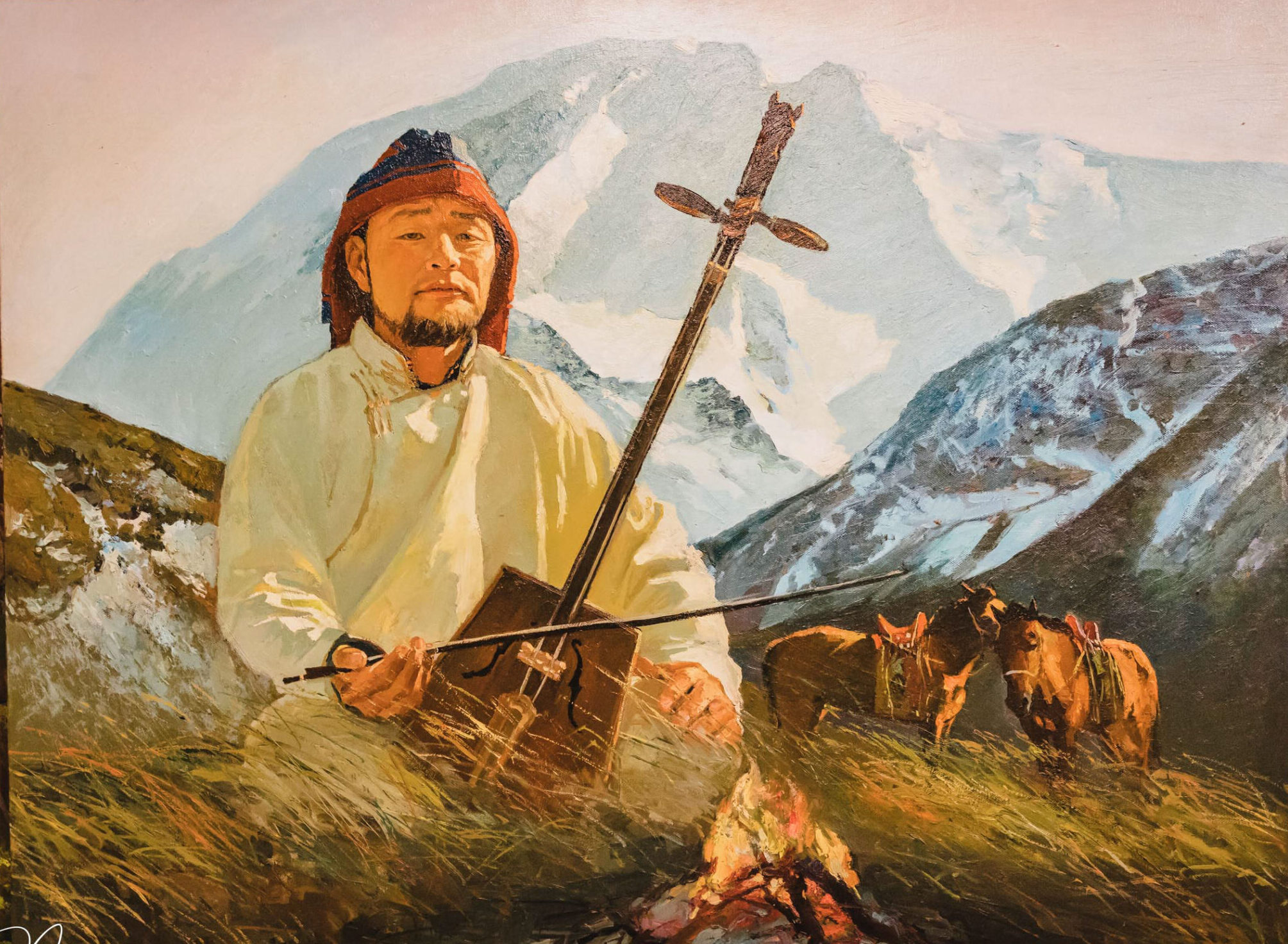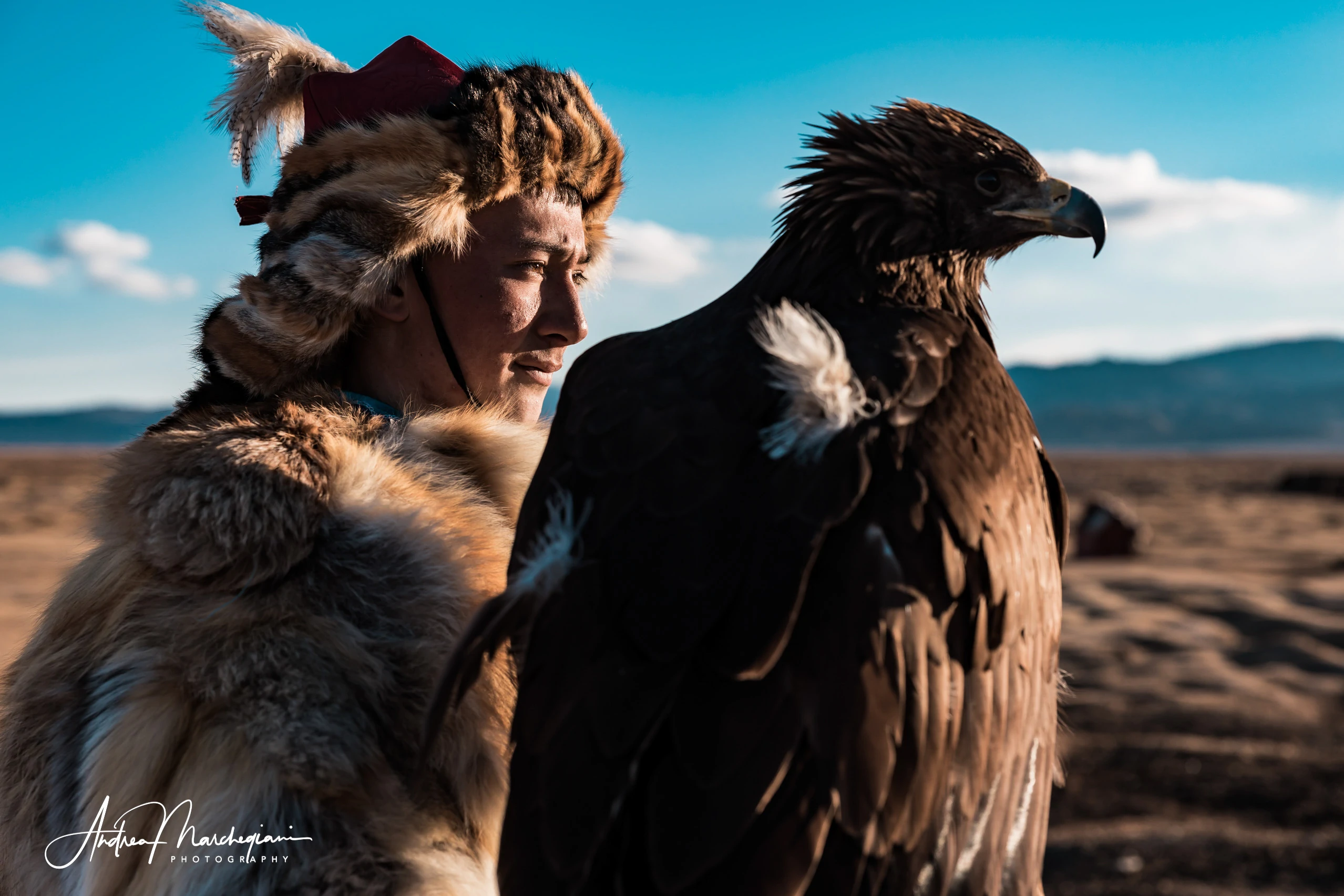
- Home
- Photo Galleries
- Portrait Photography
- Landscape Photography
- Street Photography
- China
- Ethiopia
- India
- Holy Ganges
- Varanasi
- Varanasi Ganga Aarti
- Varanasi, Manikarnika Ghat
- Varanasi Streets & Alleys
- Varanasi Demolition
- Varanasi Fruit Market
- Sarnath
- Brick Kilns
- Tamil Nadu, Chennai & Mamallapuram
- Tamil Nadu, Fort Tirumayam & Madurai
- Tamil Nadu, Tiruvannamalai & Thanjavur
- Kerala, Munnar
- Kerala, Peryiar
- Kerala, Backwaters
- Kerala, Kochi
- Kazakhstan
- Myanmar
- Senegal
- Uzbekistan
- Travel Blog
- China
- Ethiopia
- India
- Tamil Nadu & Kerala
- Varanasi
- Whato to do in Varanasi
- Varanasi Life along the Ghats
- Varanasi Death along the Ghats
- Varanasi Ganga Aarti Ceremony
- Varanasi demolished to honor Shiva
- Varanasi Fruit Market
- “Varanasi, A Journey into the Infinite”
- Sarnath
- All about River Ganges
- Holy Shit. All about Indian Cow Dung
- Clean India Project
- Brick factories
- Tilaka, pundra, bindi: what is the mark on Indian foreheads?
- Kazakhstan
- Mongolia
- Ulaanbaatar, the coldest capital in the world
- What to do in Ulaanbaatar
- Chinggis Khan Museum, 6 floors of Mongolian history
- Gorkhi-Terelj National Park and Bodgkhan Natural Reserve
- Altai Mountains, Things to do in Olgii and Sagsai
- Living with the Eagle Hunters
- Sagsai Eagle Festival
- Navrus Festival
- Xöömej, Mongolian throat singing
- Mongolian Food
- Myanmar
- Senegal
- Uzbekistan
- Latest Posts
- Photography Blog
- About
- Prints
Attending an eagle festival is one of the best ways to get in touch with the culture of Mongolian Kazakh shepherds. The most important event of this kind is held in Olgii, in the Altaj mountains, but Sagsai festival is also noteworthy. It is just a few kilometers away and gathers a smaller number of tourists, therefore giving an even more genuine experience.
But what is eagle hunting? And what to expect from a Mongolian eagle festival? Here is the report of my experience at the first spring edition of the Sagsai Eagle Festival, held on March 21, 2023
Share with your friends:
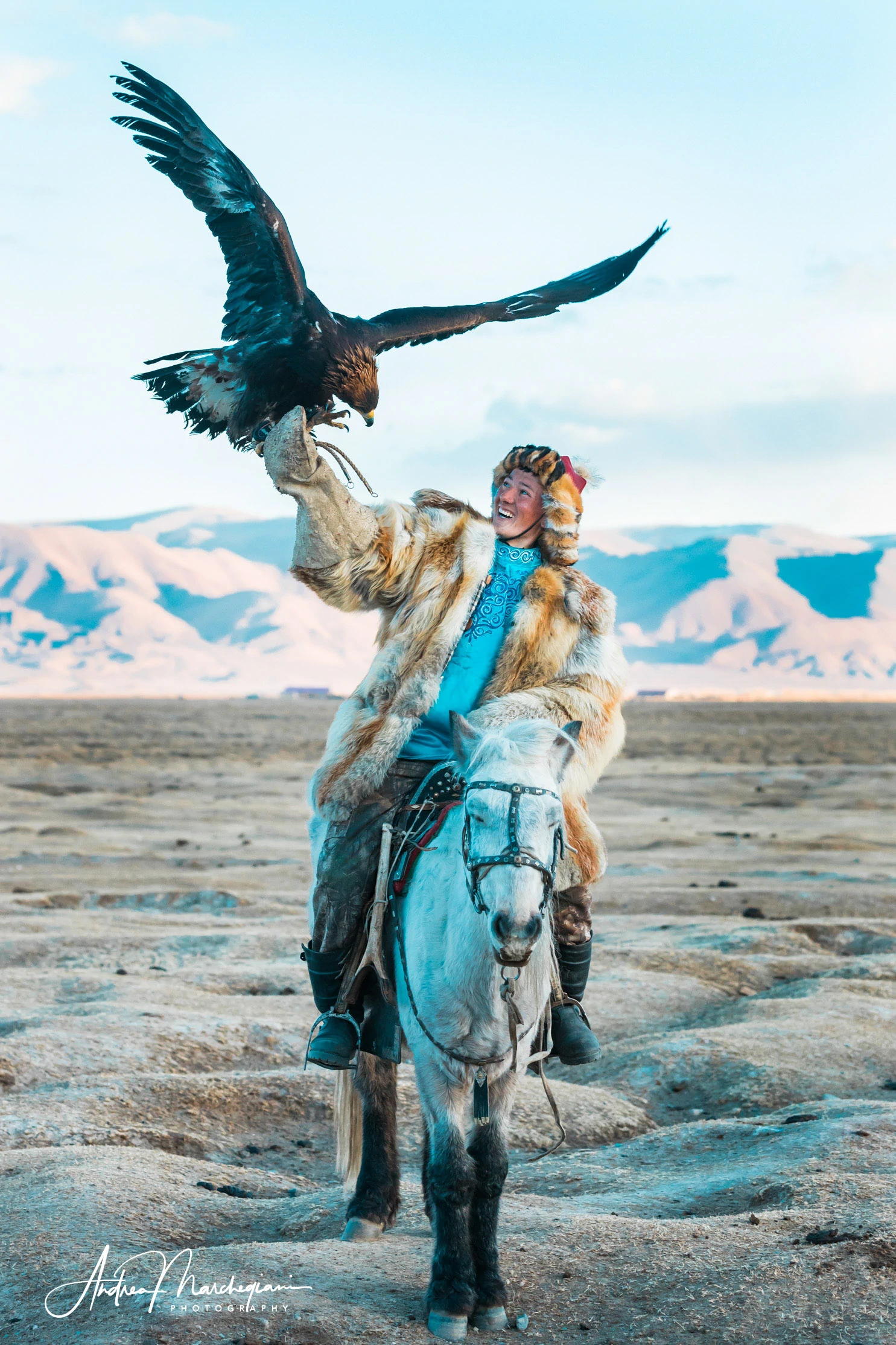
Traveling to western Mongolia
When I was asked to leave for Mongolia in winter, with average temperatures around -15 degrees, I had no doubts: I immediately accepted. Sagsai Eagle Festival would be held in March for the first time. This year the historical competition, which usually takes place at the beginning of the eagle hunting season in October, is also going to be repeated at the arrival of spring, that is, when the activity of Mongolian falconry closes its doors.
It is a unique opportunity and I cannot miss it. The tour operator I chose made no secret that my expedition was only the third they could send in March to the Altaj mountains in 10 years. Uugie, a correspondent of proven reliability, was ready to welcome us, but some details of the route would be defined on the spot. Unique experiences require determination and courage.
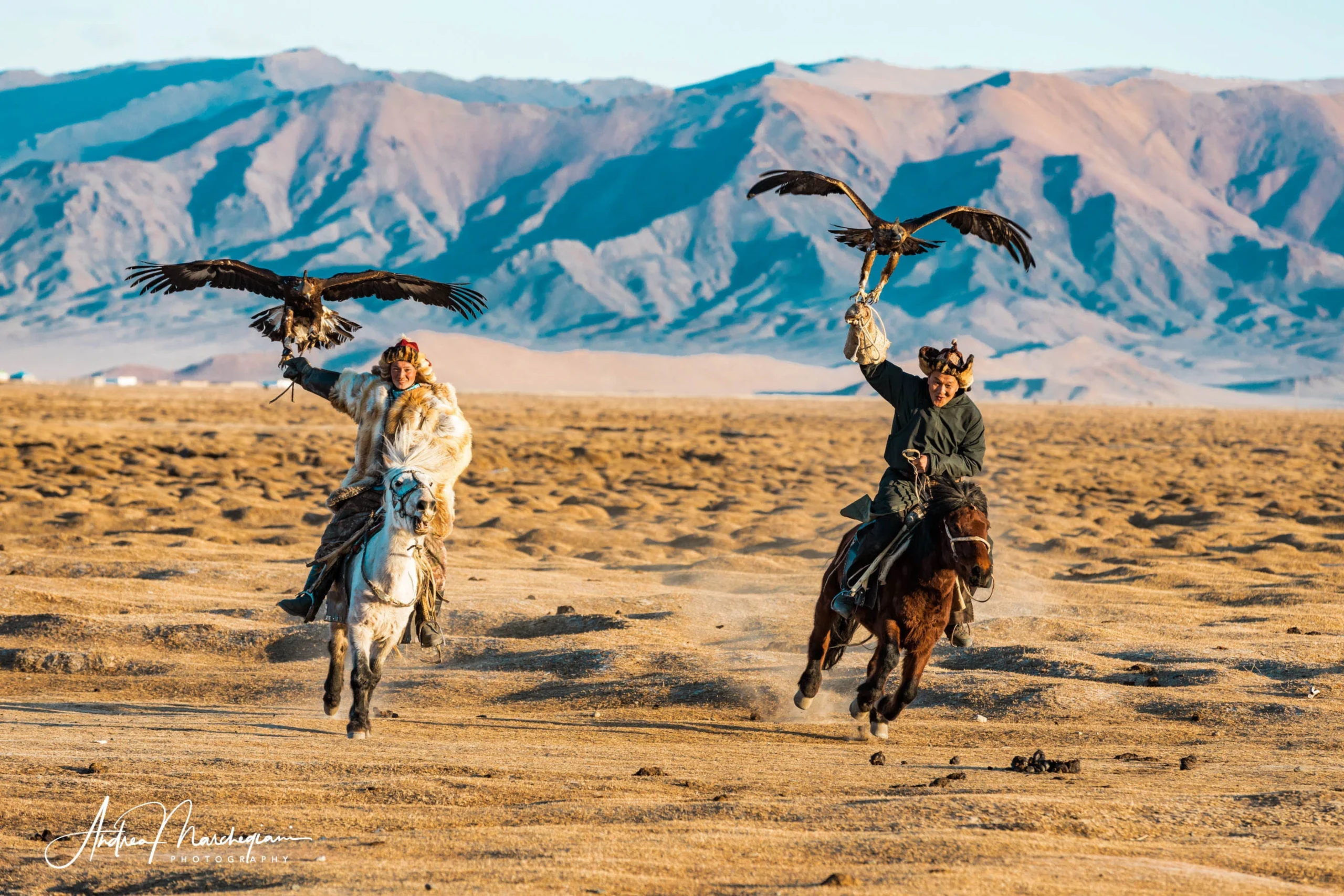
How to reach Sagsai and live with Mongolian shepherds
My stay on the Altaj mountains does not include hotel accommodation. I have in fact opted for a cohabitation with the Kazakh shepherds who live on the plateau. To reach my host family, I fly to Ulaanbaatar and wait for the first flight to Olgii, which leaves twice a week, snow storms and wind permitting. From here, aboard a UAZ, I drive up to Sagsai, a village of 5,000 souls; then I go for a few hours in absolute nothingness, until I reach the remote farm of Erlan Baimandai. With him I spend 4 days, sleeping in ger and riding through the steppes. I attend eagle training and celebrate the arrival of spring by eating boiled goat’s head. It is a surreal experience, which fills me with wonder and allows me to create a close bond with the shepherds who host me (I talk about it in detail here).
When, on the day of the festival, I see Erlan and his son Arhalyh coming up to join the competition, I feel a strong involvement, as if it was members of my family competing. Thanks to Uugie’s mediation, I learned a lot about the Kazakh lifestyle and I learned to appreciate their shy but hospitable temperament. “Once you win their trust”, confides Uugie, “the Kazakhs are generous and loyal as only those who live in harsh territories can be”.
If you are planning to attend the Eagle Festival, I would definitely recommend you look for accommodation with a local family. You will have to adapt to live in full Mongolian style, with the baths outside, the coal stoves, the food with the intense flavor of mutton, but I promise you will collect unforgettable moments and you will better understand the context which gave life to eagle hunting.
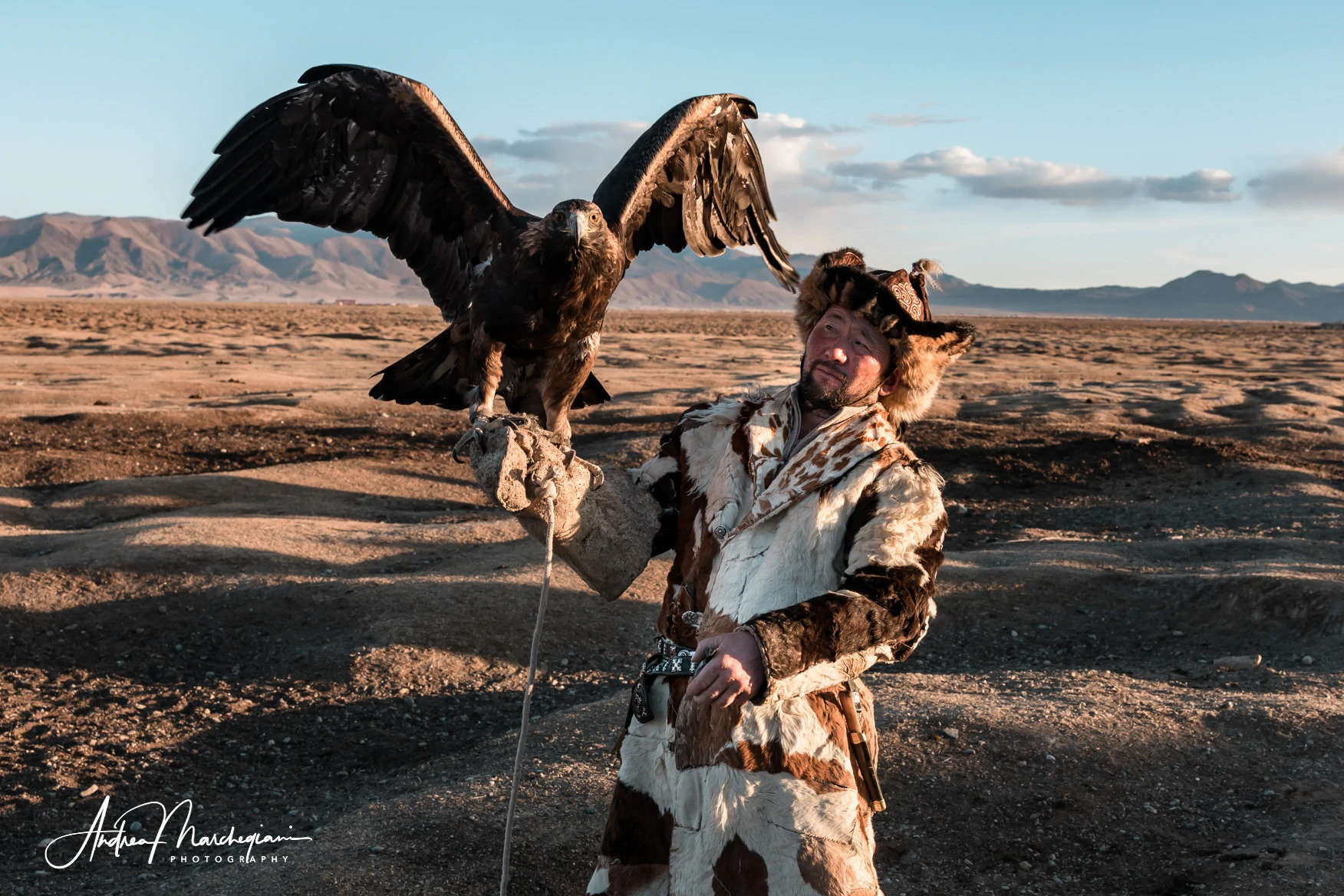
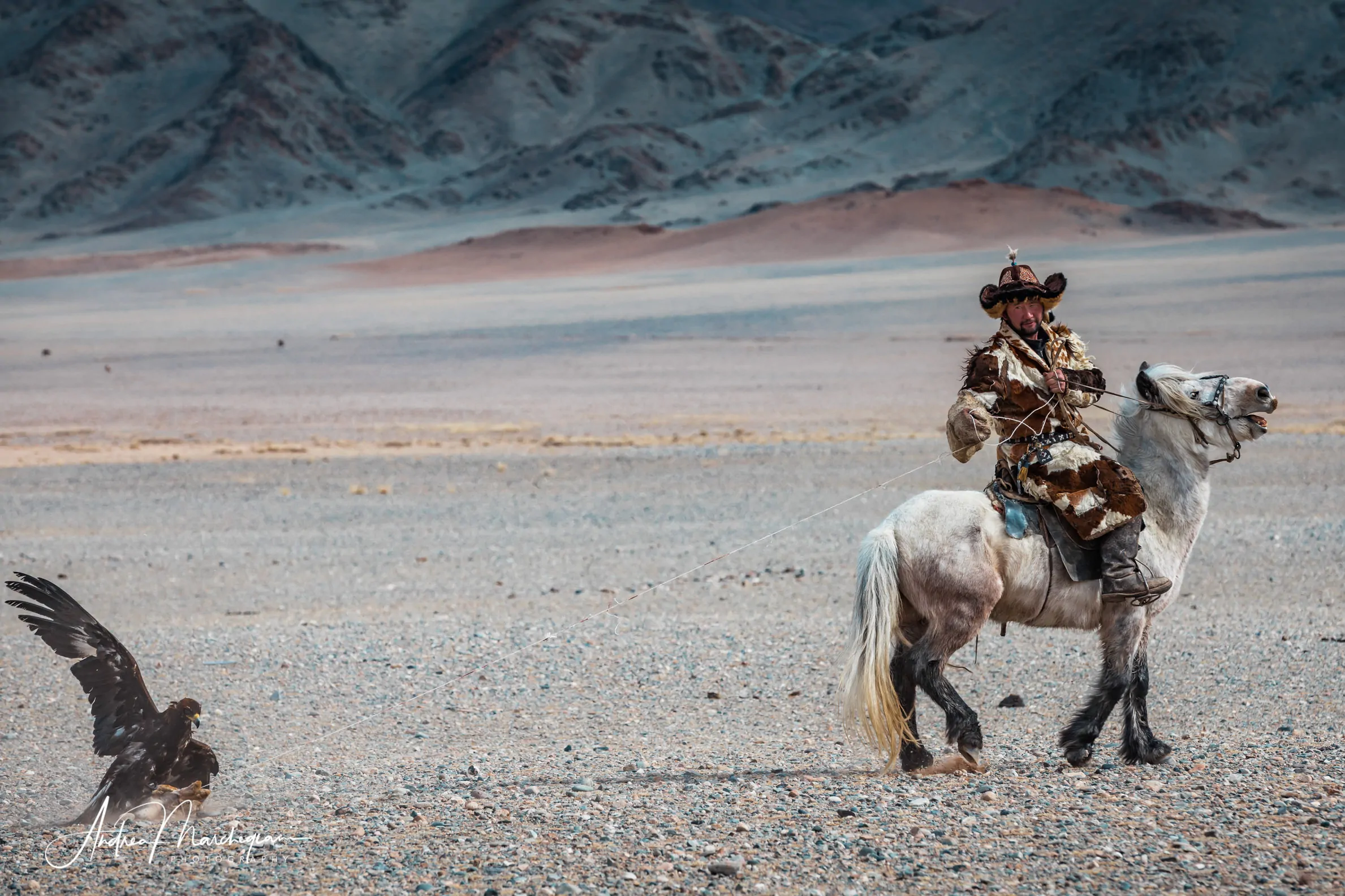
What is eagle hunting?
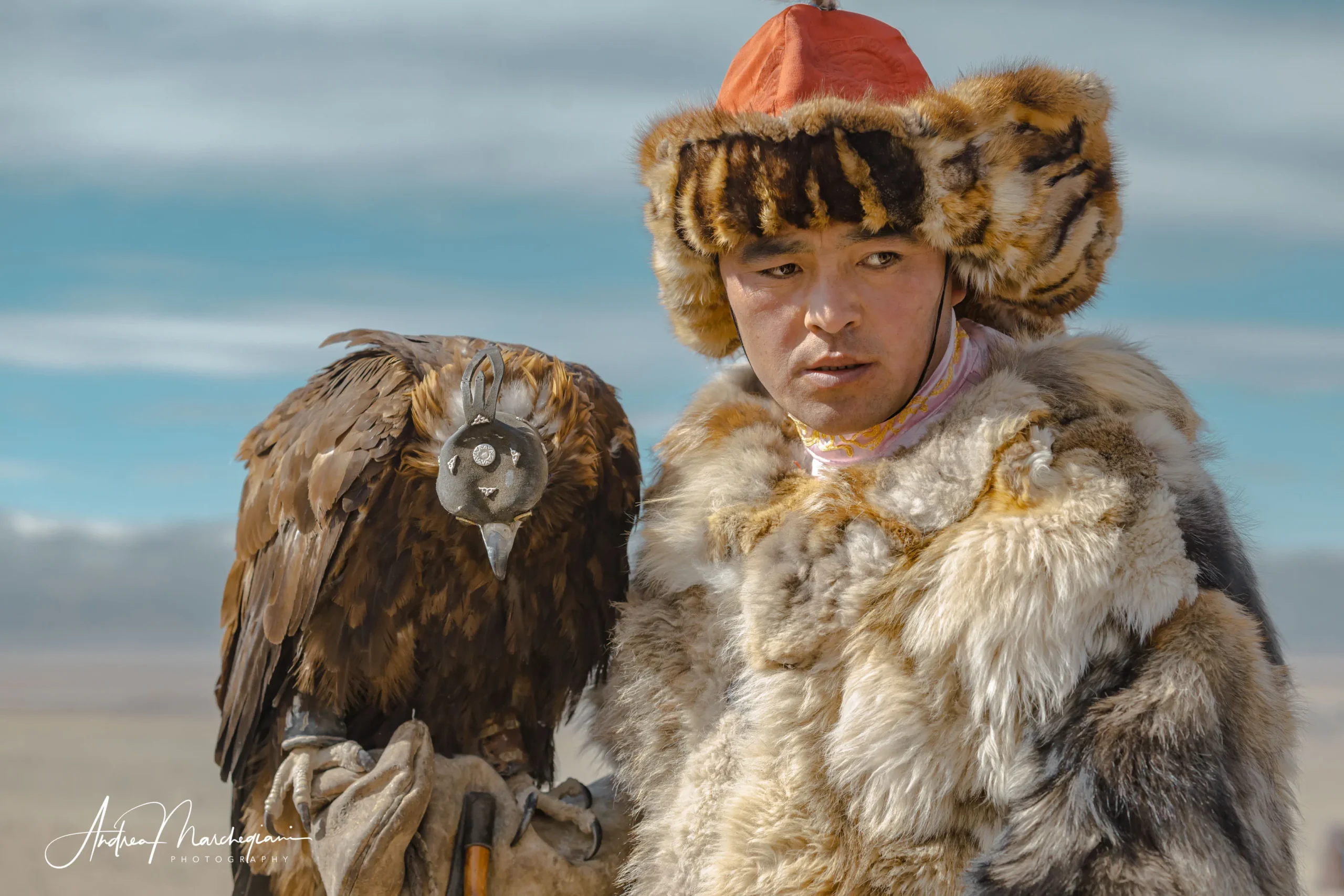
Olgii and Sagsai Eagle Festivals
Training an eagle means to teach it to hunt the prey without eating it and above all to bring it back. Comunicating with such an independent animal is a difficult art: it is no wonder eagle hunters like to compete to determine who has the most powerful and collaborative eagle.
Every year in October, two Eagle Festivals take place in the Altaj Mountains. The most important is located in Olgii, where hundreds of hunters gather; the second is in Sagsai and has a lesser attractiveness (about 40 falconers).
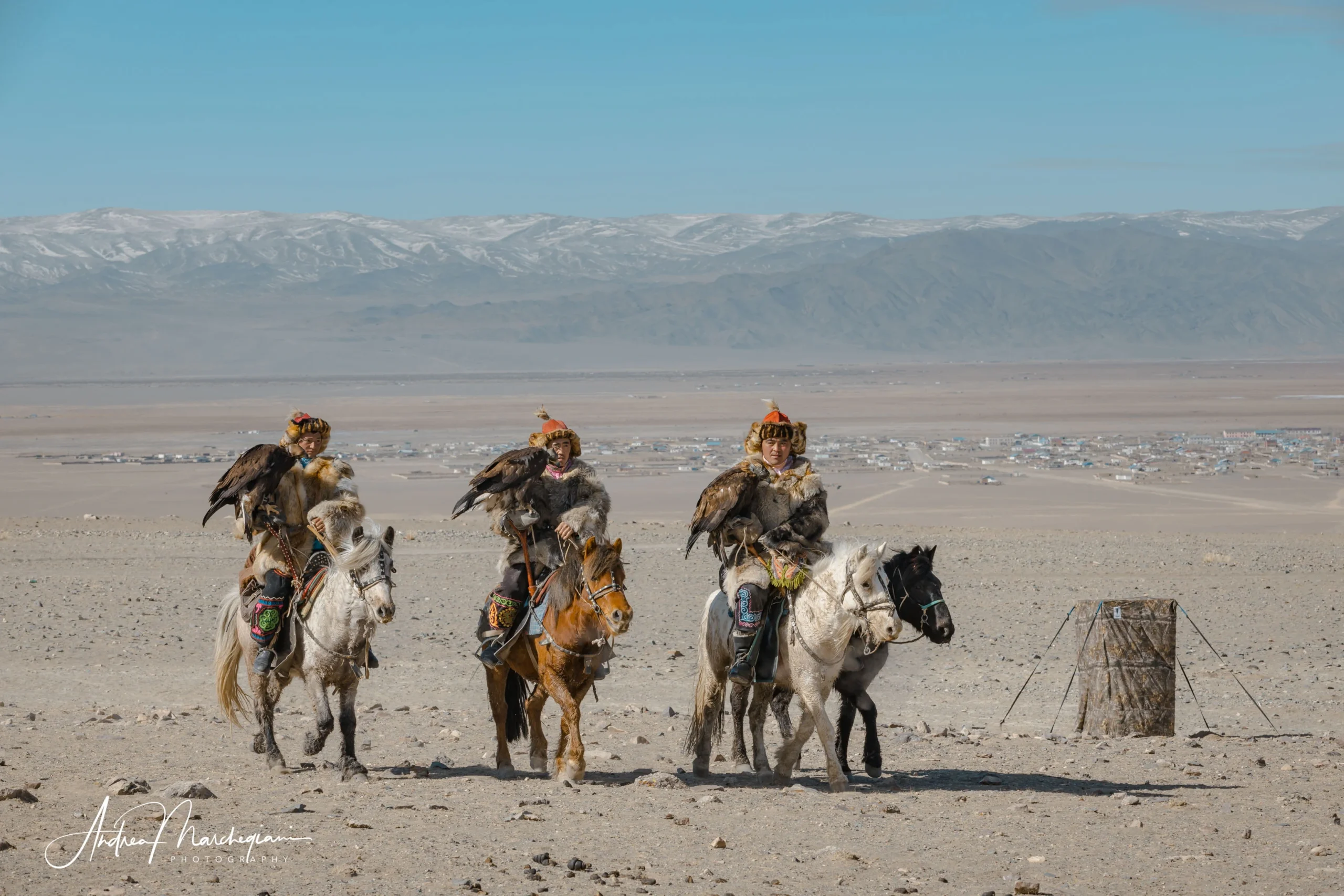
Sagsai Eagle Festival on March 21st, 2023
After the making of The Huntress documentary, Mongolian falconry is experiencing a new reinassance, so the Mongolian Eagle Hunter Association decided to inaugurate a spring edition for Sagsai Golden Eagle Festival.
In his opening speech, the president seems to address foreign photographers more than falconers. “We hope you will have fun and come back with your friends next year”.
In fact, the increasing presence of foreign tourists is changing the face of the festival, which has revised some practices to make them less indigestible to the Western palate; this generates some concerns among more conservative hunters, who fear an excessive spectacularization of the event and a distortion of their traditions (I talk about it in detail here).
The platform where the falconers will compete is flanked by mountains to allow them to reach the nearest peak from which to fly eagles. They arrive slowly, all strictly on horseback and with the eagle on their arm, wearing their best clothes.
I must say I expected to find many more tourists, but it is still a first edition (in addition, at a time of low tourist season). Maybe the organizers will be disappointed by the limited number of spectators, but for me it is a blessing: photographing a crowded event would have entailed many more limits and restrictions.
Hunters look handsome and charming and they all are happy to be photographed. Among the participants, I also spot a 12-year-old girl. The tourists surround her with great enthusiasm and many ask her if she is the protagonist of the famous documentary. She denies, even if her kind and fierce eyes reminds me a lot of the huntress of the film.
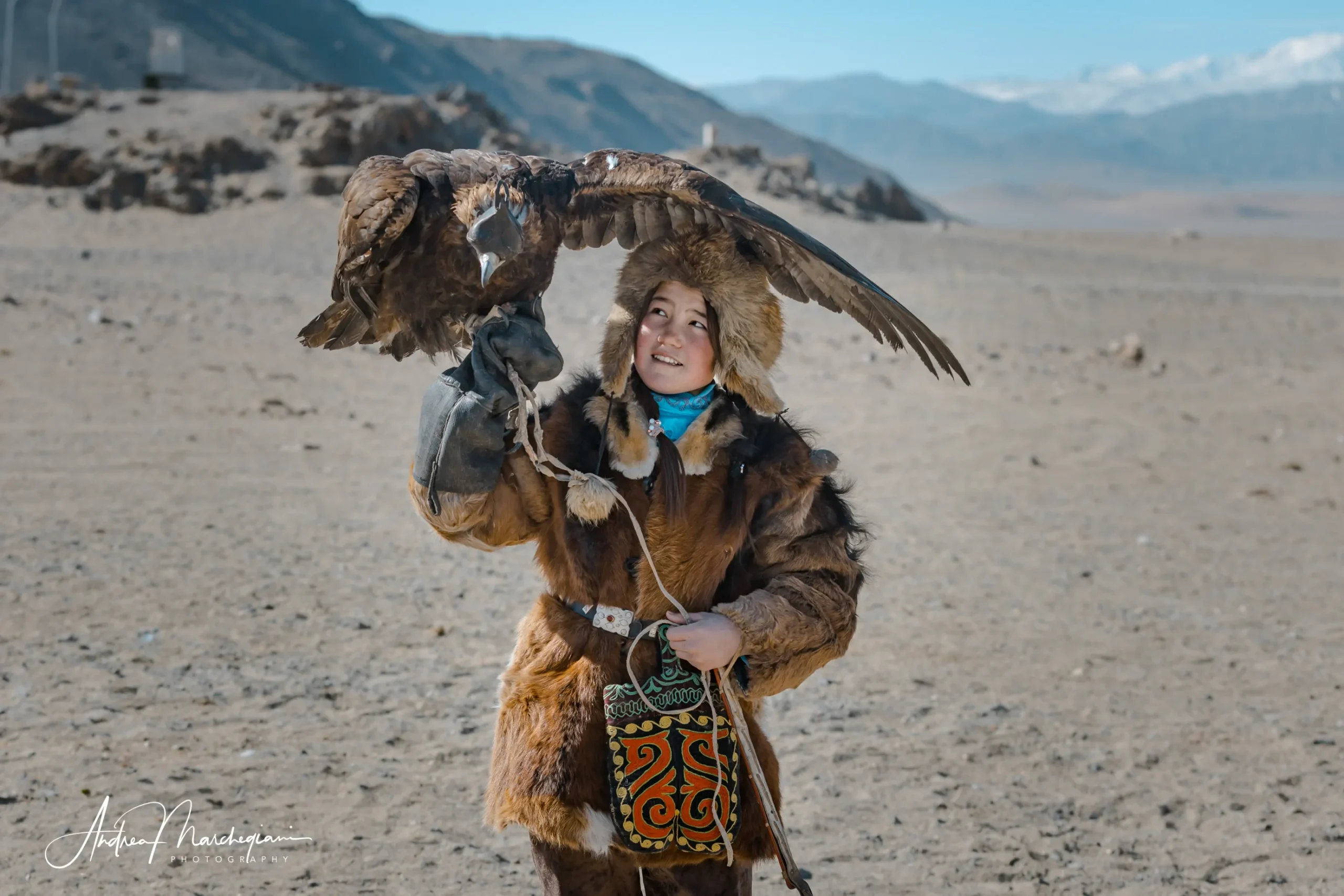
Eagle Festival specialties
Participants sign in, parade majestically in the clearing, then the race finally starts.
The Eagle Festival is based on different specialties, some testing the loyalty of eagles, others the horse-riding abilities.
At first the hunters bring the eagles to the top of the mountain and call them to themselves, while the judges take the time needed to complete the exercise; then the eagles are required to hunt a dead prey, dragged by a rope from a riding horse. The archery on horseback and the blow of the goat skin to shreds follow.
Other typical specialties include that the jockeys collect a coin from the ground, the race of horses or camels, the chase between riders that ends when the chaser manages to hit with the whip the other. Unfortunately I haven’t been able to see these last specialties, since Sagsai Eagle Festival spring edition takes place in a single day (the events in October last two days).
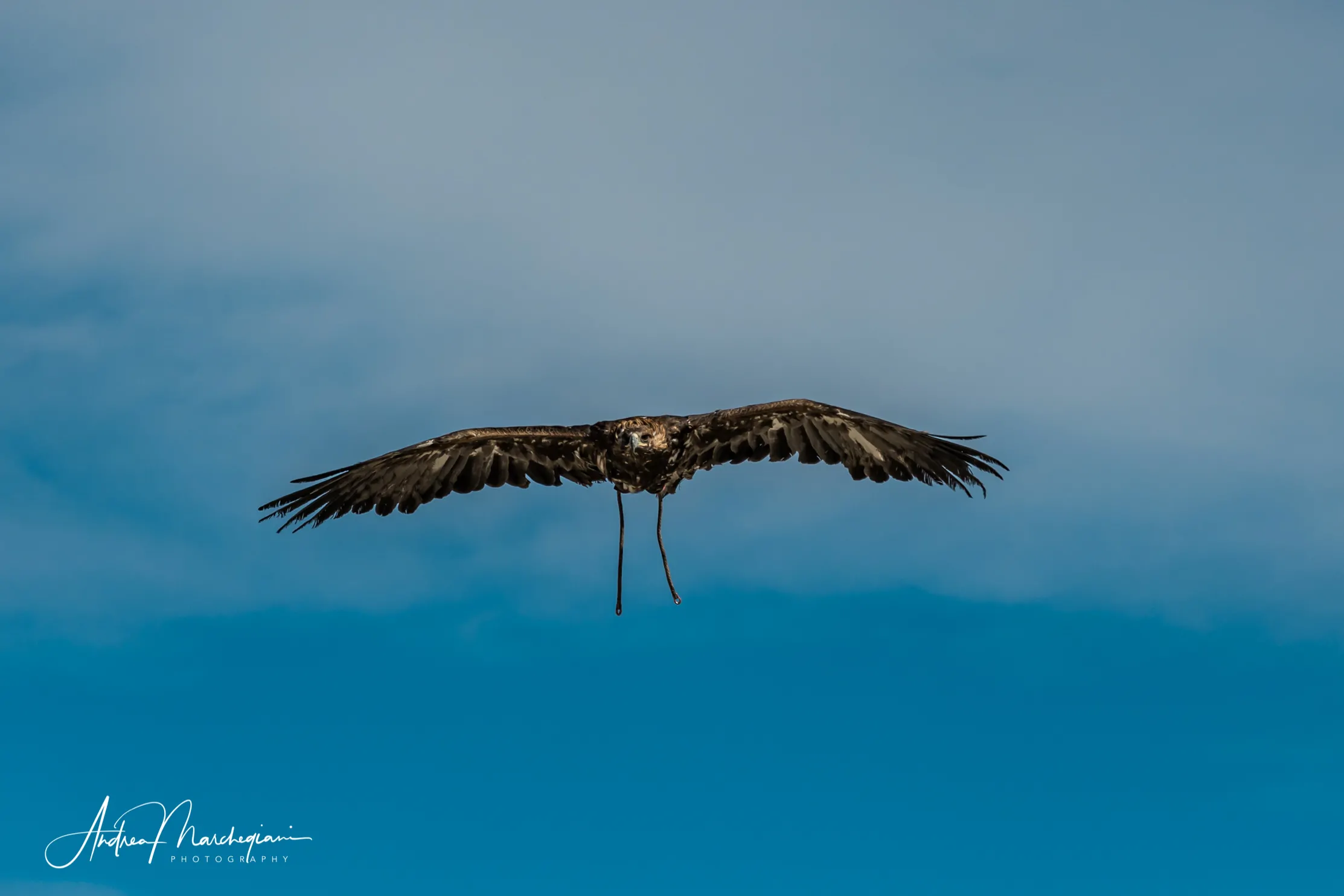
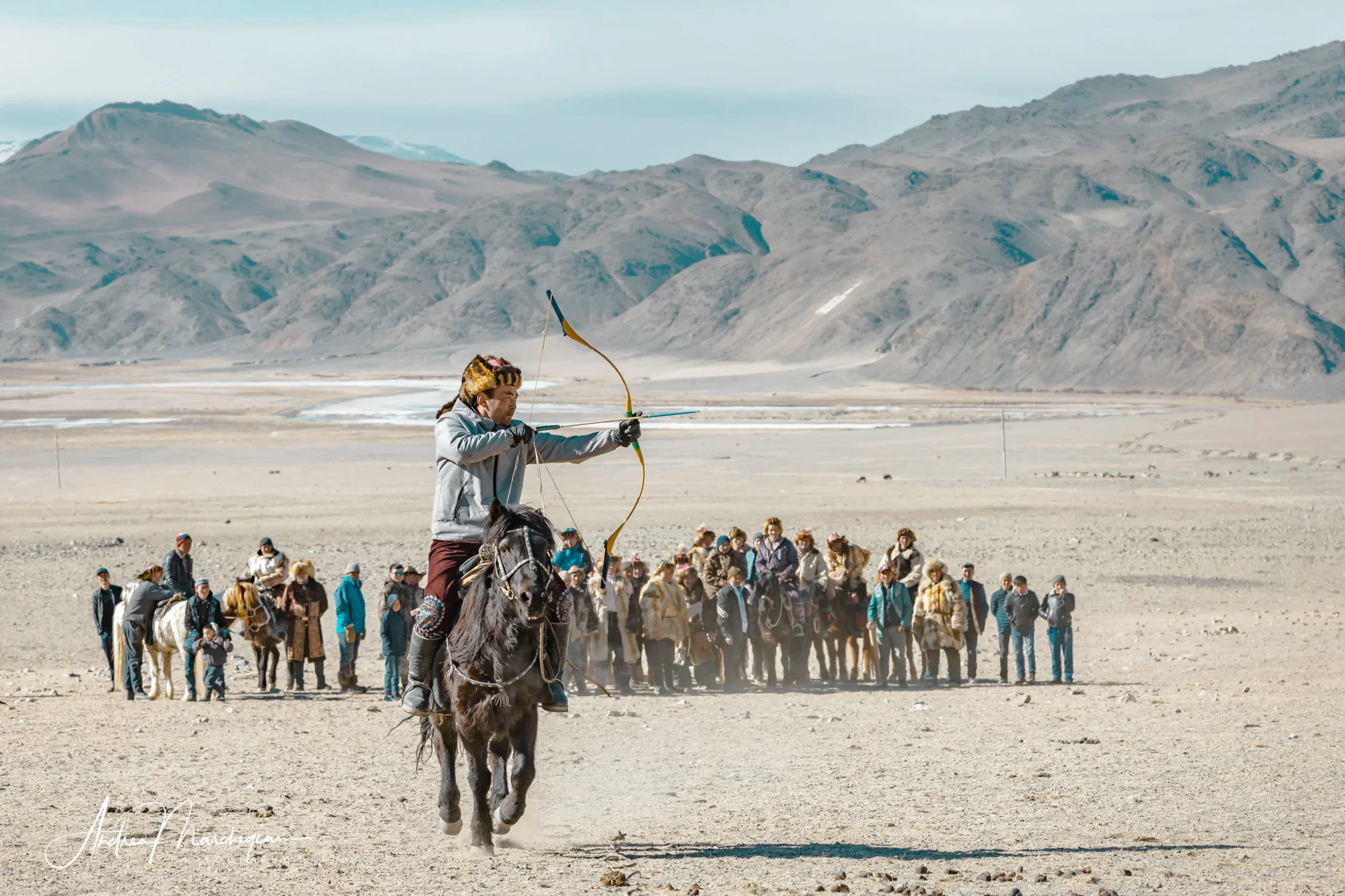
Everything takes place with maximum calm and even with a certain dose of improvisation. The judges watch the races behind a desk, but without chairs to sit on. Eagles appear lazy and little involved. Many hunters fail to land them on their prey, resulting in strict zero votes.
In addition, the esplanade area where hunters wait for the gliding eagle is quite far from the spectators’ positions, and this make them visible as dots on the horizon. If you attend the event to take photographs, I suggest you bring a very high performance telephoto lens (a 200 mm will not be enough).
The most amusing moment to me did not involve eagles but only hunters. It was the archery at full gallop: hitting the target is not easy at all and the audience laughed loudly whenever the arrow missed the goal. The falconers also laughed, accepting defeat with irony. A couple of archers managed to hit the center perfectly, receiving ovations of admiration.
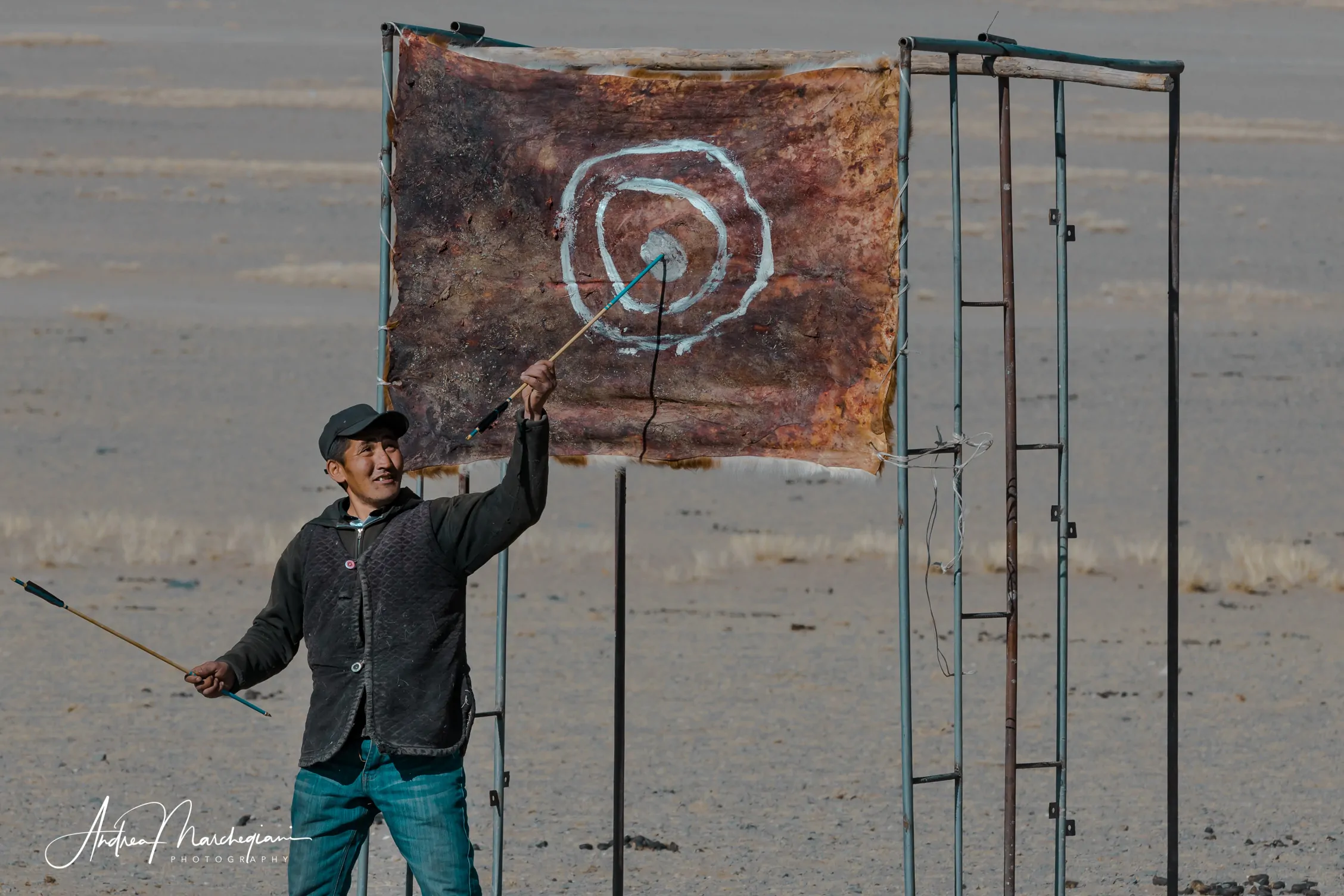
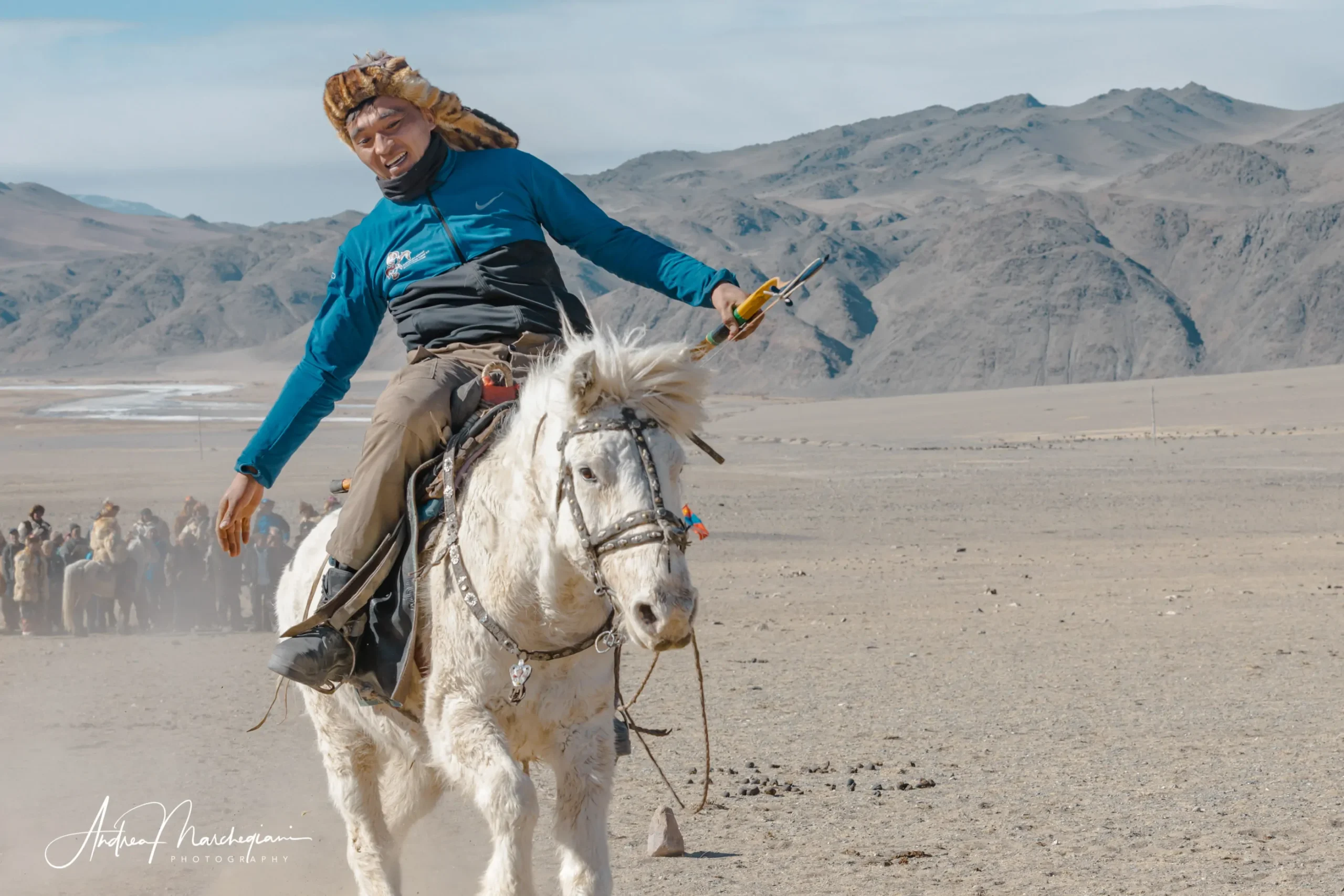
The show is interrupted at lunchtime, to allow people to have some lunch, and resume in the afternoon. In the October festivals, there are also stands selling local food but I did not find any here in Sagsai. Fortunately, Uugie had thought about this and brought with us a cook who served us some delicious noodles with mutton.
At the end of the event, the judges announce and award the winners. My friends Erlan and Arhalyh are placed 4 and 2, respectively. It is a thrill to see them receive the certificate and sip vodka to celebrate the victory!
Just before sunset, everyone takes off their tents and comes home, full of memories and emotions. The clearing returns deserted, without the slightest signal of the man’s passage.
Mongolians has a very intimate relationship with nature, which they considers a mother and deeply respect. If you decide to visit the country, pay attention to the roadsides: you will hardly find waste on the ground. Be careful not to leave any.
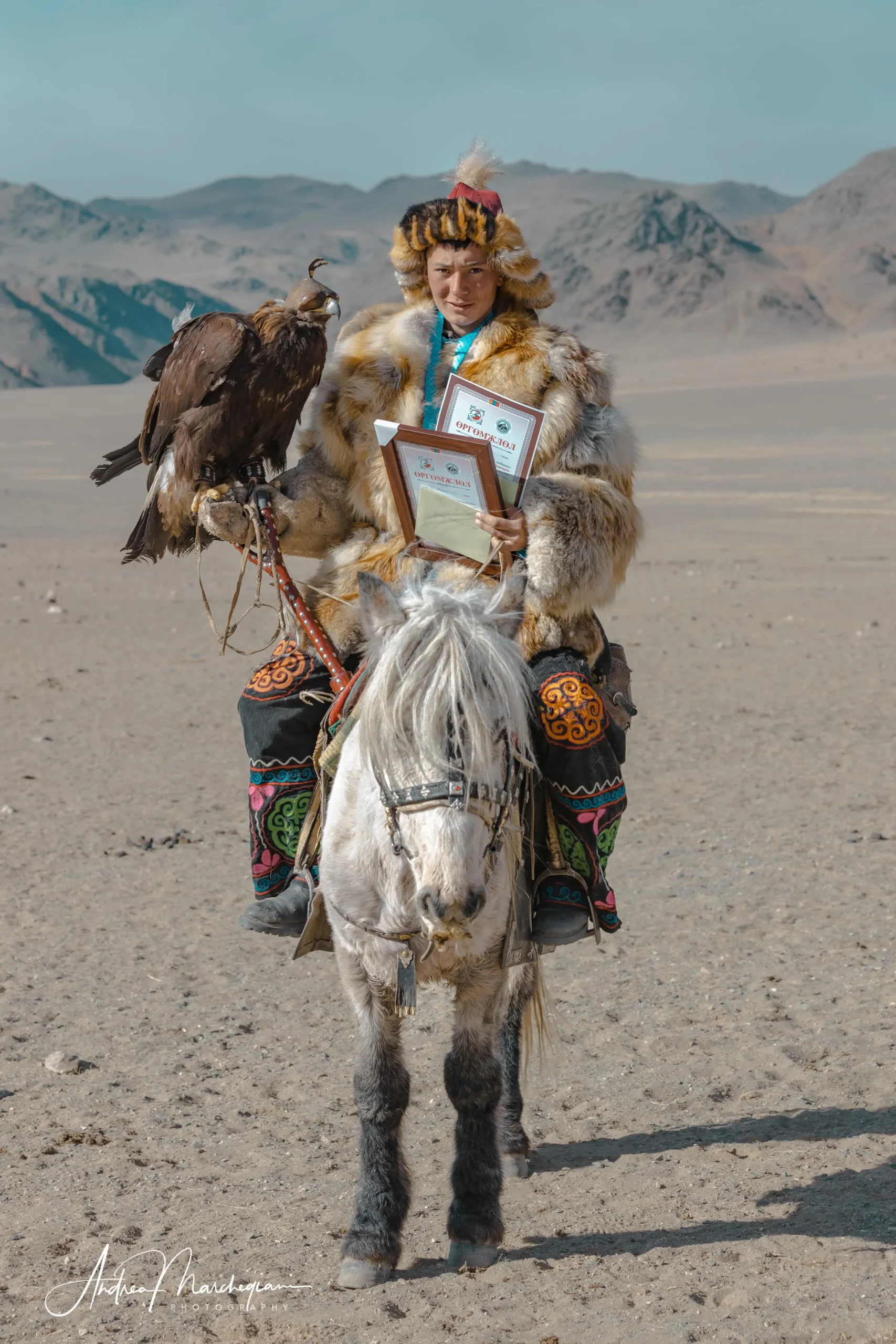
Tips for attending the Eagle Festival
To access the Eagle Festival you must contact a local tour operator, since tickets must be purchased in advance and you will need safe vans and experienced drivers to reach the exact location.
It is also important to dress properly, bearing in mind the cold temperatures of March and, to a lesser extent, October. If the sun gets cloudy, temperatures drop rapidly.
